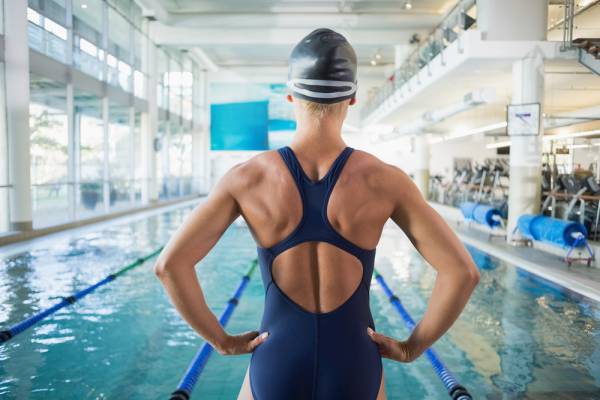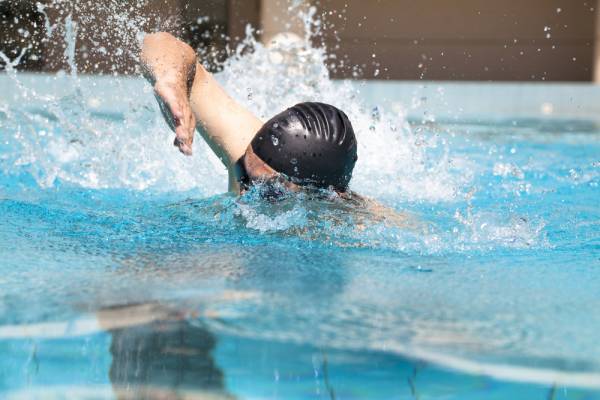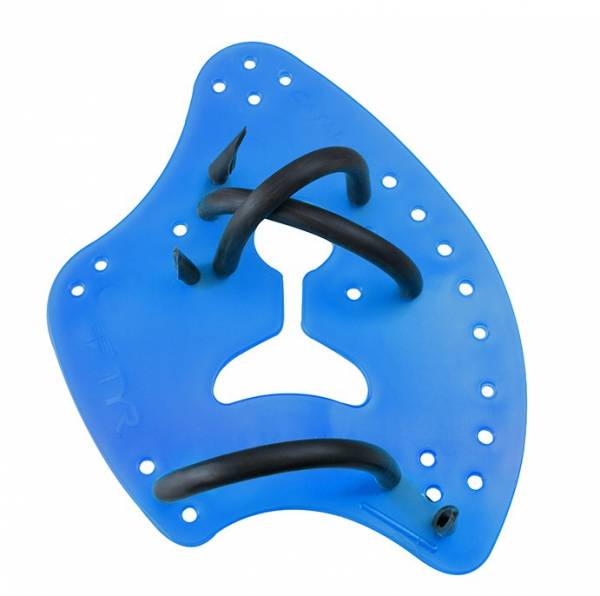You know what stinks? Learning the hard way. We each have those standout memories of times where we could have saved ourselves some serious hassle if only we were less stubborn. I’m sure one comes to mind. Almost makes you want to cringe, doesn’t it?
My goal today is to help you avoid the biggest swimming mistake I made when I was learning. I focused too much energy on technique and not enough on the actual development of swim fitness, which is a recipe for struggle.
It’s story time. Grab some popcorn and get comfortable.
The Early Days
In my family, we all readily acknowledge the fact we each have a stubborn streak a mile wide. It’s a defining trait of the Gerbers. Naturally, when I decided to take on my first Ironman with a lack of any real swimming ability, I determined I could figure it out on my own. No problem. How hard could it be, right?
RELATED: 4 Pro Tips for Ironman Swimming Success
At the time, I was into the popular lifehacker Tim Ferriss. Like me, he couldn’t make it from one end of the pool to the other without being totally winded. That is, until he found a way to hack the system and make swimming an enjoyable activity.
In his article detailing this transformation, Tim referenced the Total Immersion (TI) swimming system. That was all it took. I went to the library, grabbed every TI resource I could find, and dove in.
“While not a bad idea, in theory, this near worshipful attention to my technique didn’t add up to a lot of swim time. This, in turn, really did not help to develop my swim fitness.”
One of the first things I learned was the simple formula that defines swim speed:
Swim Speed = Distance per Stroke X Stroke Rate (Strokes per Minute)
For most people, the easiest piece of the puzzle to work on is increasing the distance per stroke. This can come in the form of reducing drag by perfecting your technique or it can come from increased upper-body strength and power. As you would expect from a book aimed at beginners, the focus was the development of proper technique and drag reduction. I ate it up.

Somewhere along the line, I got hung up on spending tremendous amounts of energy on drills and improving my form. It got to the point I’d pull myself from the water the minute I though my form was “falling apart” to avoid creating bad habits.
RELATED: Swim Speed Strokes for Swimmers (Book Review)
While not a bad idea, in theory, this near worshipful attention to my technique didn’t add up to a whole lot of swim time. This, in turn, really did not help to develop my swim fitness. To say I plateaued would be an understatement.
It is easy to get stuck believing you can cure your swimming woes by perfecting technique. I’ll be the first person to tell you that movement in a dense fluid more severely punishes poor technique. That is a true statement.
“Working with a coach also gives you guidance for addressing specific areas of your swim fitness. This keeps your training sessions from becoming too one-dimensional.”
What is also true, though, is that you face increased resistance the faster you swim. You can thank the laws of physics for that little gift. Ultimately, to endure at higher speeds, you must develop muscular strength and endurance. The long-term, “non-lifehack” path to becoming a successful swimmer must go through the land of strength and power.

Practical Application
If I were to go back and do it all over again, I’d do a few things differently to ease the painfully long process of getting faster. Take these tips and avoid making the same mistakes I did.
1. Balance Training Time
I’d make the simple acknowledgement that I should address both technique and fitness concurrently. Each swim set should address both to some degree.
READY TO GET STARTED: Free Swim Workouts
2. Work With a Coach
Even if it is just a session or two, working with a coach will give you that outside perspective you need to flesh out your blind spots and avoid plateaus. The truth is successful self-coaching is rare.
“I focused too much energy on technique and not enough on the actual development of swim fitness, which is a recipe for struggle.”
Working with a coach also gives you guidance for addressing specific areas of your swim fitness. This keeps your training sessions from becoming too one-dimensional.
3. Swim With Paddles
I experienced this all too far along my swimming journey. Swimming with paddles is akin to bringing the gym into the water with you. You can pick up a pair for a reasonable price from either TYR or Finis or you may be able to borrow them from your local pool.

As you get started with paddles, keep it small – maybe do fifty meters at a time. Once you get more comfortable, experiment. You can do long sets (400-500+ yards) or you can mix them in on short sets (100-200), but focus on maintaining a higher turnover. It all depends on what area of your fitness you are targeting.
RELATED: An Inside Look at a Swimmer’s Gear Bag
4. Swim With Bands
Oh the joy! And the torment. Swimming with bands around your ankles is one of the most powerful and, at times, discouraging tools in your arsenal. I fought this one for a long time, but it will make you a better swimmer. If you start small and give it time, you will find yourself bettering your rotation, catch, core strength, and rhythm.
When swimming with bands it is best to treat it like a drill and keep it primarily to distances of 25-50 meters. You can go longer than that, or even mix it with paddles, but make sure you have built up to it.
Save Yourself Some Headaches
Technique and swim fitness are equally important. You training sessions should reflect that. Trust me. If you’re a new or intermediate swimmer, try mixing in a few of the ideas above to keep you from hitting plateaus, or to help you break through them. Here’s to a faster you!
Photos 1, 2 and 3 courtesy of Shutterstock.
Photo 4 courtesy of TYR.






